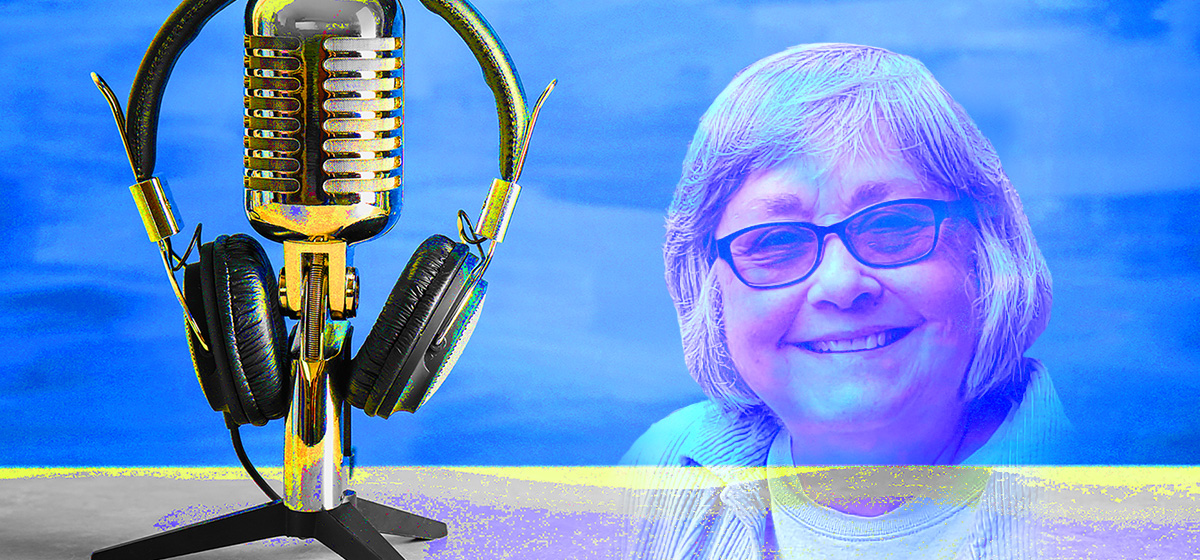Back to the Future (for Pittsburgh Rail)

Donald Bonk interviews Lucinda Beattie, who retired in March as vice president of transportation of the Pittsburgh Downtown Partnership, as part of the Pittsburgh Tomorrow podcast series. This interview was conducted before COVID-19. The transcript is abridged and edited for clarity.
View the episode archive here. View Lucinda Beattie’s profile here.“By 2040, there really ought to be six trains a day in each direction (from Pittsburgh).” – Lucinda Beattie, retired vice president for transportation, Pittsburgh Downtown Partnership
Donald Bonk: I’m here with Lucinda Beattie, former vice president of transportation of the Pittsburgh Downtown Partnership. She is going to share her backstory, and then we’re going to dive into some questions that are really fascinating about Pittsburgh’s future.
Lucinda Beattie: I moved here in 1985 after having lived in New England and in the Midwest. My husband was a minister and I moved here with my family. In the course of the next 20 years, I went back to school, the Carnegie Mellon Heinz School of Public Policy and Management, and got a degree in public policy. I realized that I wanted to focus on downtown Pittsburgh, which at that point in time was engaged in a whole process of rethinking, “What is a future for Pittsburgh?” This was back in the mid-1990s.
I started with the Pittsburgh Downtown Partnership in 2000, and I’ve been fortunate to see all the changes that have taken place in the last 20 years. With PDP, my title was vice president of transportation, and it’s been through my work representing what’s called a transportation management association that I’ve focused on reducing traffic congestion and improving air quality.
Downtown Pittsburgh today is so immeasurably changed from what it was when I started, when the convention center was just being built. Today, there’s a huge amount of investment. There’s residential housing that didn’t exist when I started. It was only the Allegheny County jail that had people living in Downtown.
Bonk: What would make Pittsburgh one of the best cities in the world? What could take it to another higher level? What’s the “ideal Pittsburgh”?
Beattie: The ideal Pittsburgh would be one where our future was not in jeopardy from some of the issues having to do with the industries that are being considered outside the city limits. We are no longer a city of older people. We’re a city of younger people. And as people have said a lot in the past, millennials like public transportation. So I see us at a crossroads in maintaining what I think was a great forward momentum and facing some issues that need to be resolved in terms of where we go as a region.
The kind of investments we need to make in downtown and the city as a whole really gets to public transportation. It’s been the glue that made it possible for downtown Pittsburgh to rise up again. If our downtown had relied on automobiles in order to get people to work, we would not have the firms, the industry and the growth that we’ve seen in the last 20 years, because we cannot handle that volume of automobile traffic.
Public transit has been historically a major factor in our area and it brings the majority of people to work every day. It’s really the equivalent of basic infrastructure for downtown, like the water and sewer system, like the thermal heating. It’s a rich and very vibrant part of downtown that needs to grow.
Bonk: When I think of the modes of transportation, we have the T and we have a robust bus system into the city. Now we have Uber and Lyft taking people around. When you think of a next step, do you see some rapid transit bus system that’s been talked about as a game changer in the near term future?
Beattie: The bus rapid transit, particularly the current system that’s in place that allows rapid transit service to the Mon Valley and that goes through Oakland, out to Highland Park, through Oakland, up to Squirrel Hill, is an incredible step forward—a game changer.
Highland Park and Squirrel Hill already have a lot of service, but this will do it. It will get more people on the buses because of the frequency and because there will be probably fewer stops. And I think it’s great. The bus guide way system, the P1 and the P2, are the major routes into downtown. They carry more people from the East End than the light rail does.
I honestly think the guide way system should be expanded. If I were going to change things, I would extend the East bus way all the way out to Murrysville, where there is a lot of new development. Investment would get people off the parkway, which is one of the major problems in terms of congestion.
The issue with the Port Authority isn’t a willingness to add new service. It’s that they are prevented from adding new service by PA Act 89. And there’s the whole issue of cost and the issue of transportation funding, which the legislature has not begun to deal with.
I was just looking at a map of passenger commuter rail in Pittsburgh in 1942. If you lived here 60 years ago, you had better access to commuter rail. People could get into downtown from Newcastle by train, up what is now Route 8. And there was a vibrant passenger rail network to the east. At one point in the 1960s, there were as many as 12 trains a day, going in and out. And these were passenger rail trains of Pittsburgh.
Bonk: Currently we only have one train each way. You can come into Pittsburgh from the east and arrive at 8 PM, but you have to go back out (east) at 7:30 a.m. in the morning.
Beattie: I’ve been working on trying to get a second train ready for about six or seven years now. We’re closer than we’ve ever been. Norfolk Southern is doing the proprietary feasibility study that they need to do of the route. The issue, again, is going to be money, because there will need to be investments made to improve the infrastructure along the Pennsylvanian.
When you compare costs on transportation, people accept the idea that a stretch of roadway might cost $28 million. If you talk about passenger rail and you say $28 million, people think that that’s an outrageously large number.
Bonk: Do you have any thoughts about a transformational, enormous moonshot idea for Pittsburgh?
Beattie: The thing that could be done would be to significantly reinvest in rail. The group I belong to is called Western Pennsylvanians for Passenger Rail. We’ve been advocating for a number of years for three trains a day in each direction. By 2040, there really ought to be six trains a day in each direction. The stations along the route should be upgraded.
The issue for people in our part of the state is that we’ve been cut off. Our ability to travel inter-city in Pennsylvania has been severely limited in the last 50 years. The ease and affordability that western Pennsylvanians have in traveling to Harrisburg or Philadelphia is limited.
Bonk: I understand there are between 12 and 14 trains a day between Harrisburg and Philadelphia. And we have two going in the other direction. As a person who went to school at the University of Pennsylvania in Philadelphia but is from western Pennsylvania, I would love to have the connectivity that has fueled the Harrisburg to Philadelphia quarter economically and in so many other dimensions because of that transit service.
Beattie: And the state has made a significant investment in the last 20 years in that service. It’s been approximately $400 million in the rail infrastructure. And then since 2009, it’s been a minimum of $200 million in multiple funding sources to upgrade the train stations. People need to get from Altoona to Harrisburg, from Johnstown to Pittsburgh. With a minimum of six trains a day, you could be back to almost a commuter network that would allow economic development.
Bonk: As we’ve seen in Washington, D.C., everywhere where the metro went, the areas around those stops became enormously prosperous and successful residential areas.
I wanted to make one last question here. Anything that you have on your mind about things that we could do in the near-term future that would have an impact on the city?
Beattie: I think the Port Authority focusing on expanding the East Bus Way is a critical first step. I also think finishing the BRT (Bus Rapid Transit) is the best way for transit. We need to find the funding sources locally. Actually, I think we’re going to need creative financing through the state. We should be going to our congressional delegation and getting money.
Beattie (addendum): As vice president of Western Pennsylvanians for Passenger Rail (WPPR), I continue to advocate for our region to get additional passenger rail service on the Pennsylvanian. Amtrak’s five-year plan now includes a second train in service in Fiscal 2024, and Norfolk Southern is currently doing a feasibility study of the corridor to determine what investments may need to be made for a second passenger rail train.
This past September, I was a panelist speaking on Sustainable Transportation for the Virtual Jobs Showcase.





